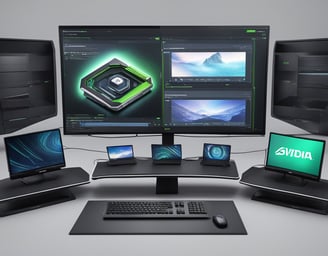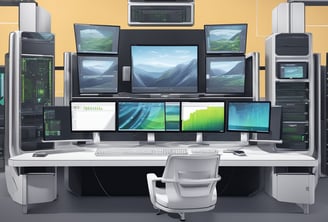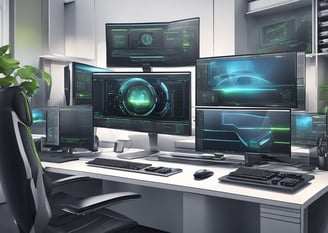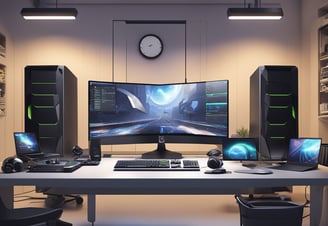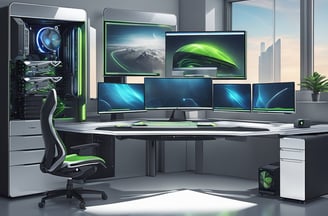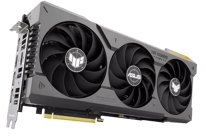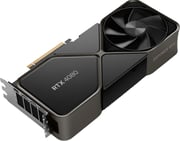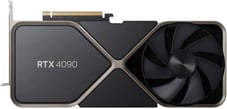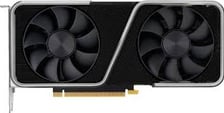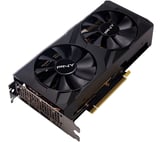Best NVIDIA Graphics Cards for Video Editing in 2025
3/31/2025
For video editors in 2025, selecting the right graphics card can significantly impact both performance and efficiency. With the increasing demands of high-resolution footage and complex editing software, having a powerful GPU is essential. The top 5 NVIDIA graphics cards for video editing this year are designed to optimize rendering times and enhance overall workflow.
These GPUs offer advanced features such as real-time ray tracing and AI-based enhancements, making them suitable for both professional and aspiring video editors. As the industry evolves, choosing the right technology becomes crucial for maximizing creativity and productivity.
This guide will highlight the most effective NVIDIA options available in 2025, ensuring that video editors can make informed decisions based on their specific needs and budgets.
Evolution of NVIDIA's Video Editing Capabilities
NVIDIA has continually advanced its graphics technologies to meet the demands of video editing professionals. The company has integrated innovative features that enhance editing efficiency and quality, significantly impacting the industry.
Historical Progression
NVIDIA's journey in video editing began with the introduction of the GeForce series, which provided solid performance for gaming and professional applications. Early cards offered basic support for video rendering but lacked specialized features for editing.
As technology progressed, the introduction of the Quadro series shifted focus toward professional solutions. Quadro cards incorporated precision and support for complex workflows, making them a choice for studios. The release of the CUDA architecture in 2006 allowed for parallel processing, drastically improving rendering speeds in video editing software.
Technological Breakthroughs
Recent advancements in NVIDIA's graphics cards have included features specifically designed for video editing. The introduction of real-time ray tracing in the RTX series has enabled editors to achieve stunning visual effects that enhance storytelling.
NVIDIA's partnership with software developers has also led to better integration of GPU-accelerated rendering in popular editing programs. Features like the NVENC encoder have made exporting high-quality videos faster without compromising quality.
Additionally, support for AI technologies in the latest GPUs allows for automated tasks such as color correction and noise reduction, streamlining the editing process significantly.
Top 5 NVIDIA Graphics Cards for Video Editing
Selecting the right NVIDIA graphics card for video editing is critical for achieving high performance and efficiency. Each option listed excels in specific areas, catering to different needs and budgets.
1.NVIDIA RTX 4090: Performance and Features
The NVIDIA RTX 4090 stands as the pinnacle of performance for video editors in 2025. It features 24 GB of GDDR6X memory, delivering exceptional rendering speeds and real-time editing capabilities. This card supports DLSS 3, enhancing frame rates without a loss in quality.
Its CUDA cores enable rapid processing of high-resolution video projects, especially 8K content. The advanced cooling system ensures consistent performance during long editing sessions. Additionally, the inclusion of ray tracing technology further enhances visual effects, making it ideal for animation and film production.
2.NVIDIA RTX 4080: Balancing Cost and Efficiency
The NVIDIA RTX 4080 offers an excellent balance between high performance and cost. With 16 GB of GDDR6X memory, it effectively handles 4K video workflows and complex projects.
The enhanced power efficiency ensures less heat generation, maintaining optimal performance without excessive noise. Its support for hardware-accelerated encoding speeds up the export process significantly, a crucial factor for tight deadlines.
The RTX 4080 also retains features like ray tracing and DLSS, allowing creators to produce stunning visuals while keeping costs manageable.
3.NVIDIA RTX 4070 Ti: Mainstream Choice
The NVIDIA RTX 4070 Ti is a popular choice for mainstream video editors. Equipped with 12 GB of GDDR6X memory, it delivers a robust performance for 4K editing tasks.
This graphics card strikes a commendable balance between price and capability, making it accessible for many professionals. Its ray tracing capabilities allow creators to achieve lifelike lighting effects in their projects.
Additionally, support for AI and machine learning expands creative possibilities, making it a versatile option for diverse editing tasks.
4.NVIDIA RTX 3060 Ti: Budget-Friendly Power
The NVIDIA RTX 3060 Ti serves as a budget-friendly option that doesn't compromise on quality. With 8 GB of GDDR6 memory, it effectively handles HD and some 4K video editing tasks.
This card is particularly suited for entry-level professionals and those who prioritize cost without sacrificing too much performance. It features sufficient CUDA cores for smooth playback and rendering of most video formats.
Support for NVIDIA Studio Drivers enhances stability and performance in creative applications, making it a solid choice for budget-conscious editors.
5.NVIDIA RTX 3050: Entry Level Editing
The NVIDIA RTX 3050 is ideal for beginner video editors seeking a solid entry-level card. With 8 GB of GDDR6 memory, it provides adequate power for simple editing tasks and HD content.
This graphics card allows users to learn and grow in video editing without a significant financial investment. Although it's not designed for heavy workloads, it manages basic effects and transitions with ease.
The RTX 3050 supports NVIDIA's ecosystem, ensuring compatibility with various creative software platforms, making it a reliable starting point for aspiring video editors.
Assessing Your Video Editing Needs
Choosing the right graphics card for video editing requires an evaluation of specific needs. Key areas to consider include software compatibility, resolution and workflow requirements, and budget constraints.
Software Compatibility
Not all graphics cards work seamlessly with every editing software. Popular applications like Adobe Premiere Pro, DaVinci Resolve, and Final Cut Pro have varying levels of support for NVIDIA GPUs.
CUDA Cores: NVIDIA cards utilize CUDA technology to enhance performance in supported applications. This is crucial for rendering and playback.
Driver Updates: Keeping drivers updated ensures optimal efficiency and compatibility with the latest software features.
Compatibility should influence choice, as selecting a GPU optimized for specific software can yield smoother workflows and better performance.
Resolution and Workflow Considerations
Resolution affects graphics card requirements significantly. Editing at 4K or higher demands more powerful hardware compared to 1080p.
Editing Workflow: If working with multi-camera setups or complex projects, a robust GPU is essential.
Playback Performance: Higher resolutions can lead to dropped frames if the card is inadequate.
Consider not just current needs but anticipated projects to select a card that will remain effective as video standards evolve.
Budget and Futureproofing
Budget constraints are a major factor when selecting a graphics card. Higher-performance GPUs typically come with a higher price tag.
Initial Investment: Determine the level of performance required and choose a card within budget that meets those needs.
Futureproofing: Selecting a slightly higher-tier card can extend usability as video technology advances.
Investing wisely ensures that a graphics card can handle future software updates and increased demands without needing immediate replacement.
Maximizing Your Video Editing Performance
Achieving optimal video editing performance involves carefully adjusting GPU settings, keeping drivers current, and implementing effective cooling solutions. Each element plays a crucial role in ensuring a smooth editing process.
Optimizing GPU Settings
Configuring the GPU settings can significantly enhance video editing capabilities. Start by adjusting the resolution, frame rate, and bit depth according to project needs. It’s essential to enable GPU acceleration within editing software, allowing the graphics card to handle more intensive processes.
Adjust settings like playback quality to a lower resolution while editing. This approach conserves resources, reducing lag during playback. Additionally, turning off unnecessary background applications can free up memory for smoother performance. Utilize software profiles to specify settings for different projects, allowing for quick adjustments based on workload.
Staying Updated with Drivers
Regularly updating drivers ensures that the NVIDIA graphics card performs at its best. New driver releases often include optimizations and bug fixes that can enhance performance in specific applications. Users should check NVIDIA’s website or use the GeForce Experience application to receive notifications for updates.
Before updating, it’s wise to create a system restore point. This precaution safeguards against potential issues that might arise from new drivers. After installation, restarting the system helps apply changes. Staying on top of driver updates can lead to more reliable performance and render times.
Effective Cooling Solutions
Maintaining optimal temperatures is crucial for sustained graphics card performance. Proper cooling solutions can prevent thermal throttling, which may slow down rendering speeds. Users should ensure adequate airflow in the PC case, employing fans that direct cool air over critical components.
Consider installing aftermarket coolers or liquid cooling systems for enhanced thermal management. These solutions can significantly reduce operating temperatures, especially during demanding tasks. Regular cleaning of dust and debris from components can also improve airflow, ensuring the GPU runs efficiently.
Complementary Technologies and Setup
Choosing the right technologies to complement NVIDIA graphics cards enhances performance during video editing. Key components such as CPUs, RAM, storage solutions, and monitors play crucial roles in optimizing the editing workflow.
Pairing CPUs and RAM
A powerful CPU is essential for video editing, especially when paired with an NVIDIA graphics card. Processors such as the Intel Core i9 and AMD Ryzen 9 deliver exceptional multi-threaded performance, efficiently handling rendering tasks.
Recommended Configuration:
Intel Core i9 12900K: Great for heavy workloads.
AMD Ryzen 9 7950X: Excellent for parallel processing.
For RAM, 32GB is advisable as a minimum, while 64GB or more is ideal for 4K projects. Fast DDR4 or DDR5 RAM enhances data transfer rates, ensuring smoother playback and quicker rendering times.
The Role of SSDs and HDDs
Storage speed significantly impacts video editing efficiency. Solid State Drives (SSDs) are essential for storing project files and software, providing quick access times and transfer rates.
Storage Recommendations:
NVMe SSDs: Up to 7000 MB/s read speeds.
SATA SSDs: More affordable, still much faster than HDDs.
While SSDs should serve as primary storage, Hard Disk Drives (HDDs) can be used for archiving and backing up large files due to their cost-effectiveness. A balanced storage setup improves workflow and reduces downtime while importing or exporting footage.
Monitors and Color Accuracy
A high-quality monitor is vital for accurate color grading and overall video editing tasks. Look for monitors that support at least 100% sRGB coverage and a wide color gamut.
Monitor Recommendations:
IPS Panels: Offer better color consistency and viewing angles.
4K Resolution: Ideal for precise editing.
Calibration tools help achieve accurate color representation, ensuring the final output matches the intended design. Investing in a good monitor enhances the editing experience and leads to more professional results.
Other Related Blogs
Best GPUs for 3D Rendering in Blender and Cinema 4D
A detailed breakdown of the best GPUs for 3D artists and animators working in Blender, Cinema 4D, and similar software. Learn which cards deliver the fastest rendering speeds, best value, and smoothest viewport performance.
Best Graphics Cards for Adobe Photoshop & Illustrator (2025 Guide)
Explore the top GPUs optimized for smooth performance in Photoshop and Illustrator. This guide helps designers choose the right graphics card for faster rendering, multitasking, and high-res editing in 2025.

